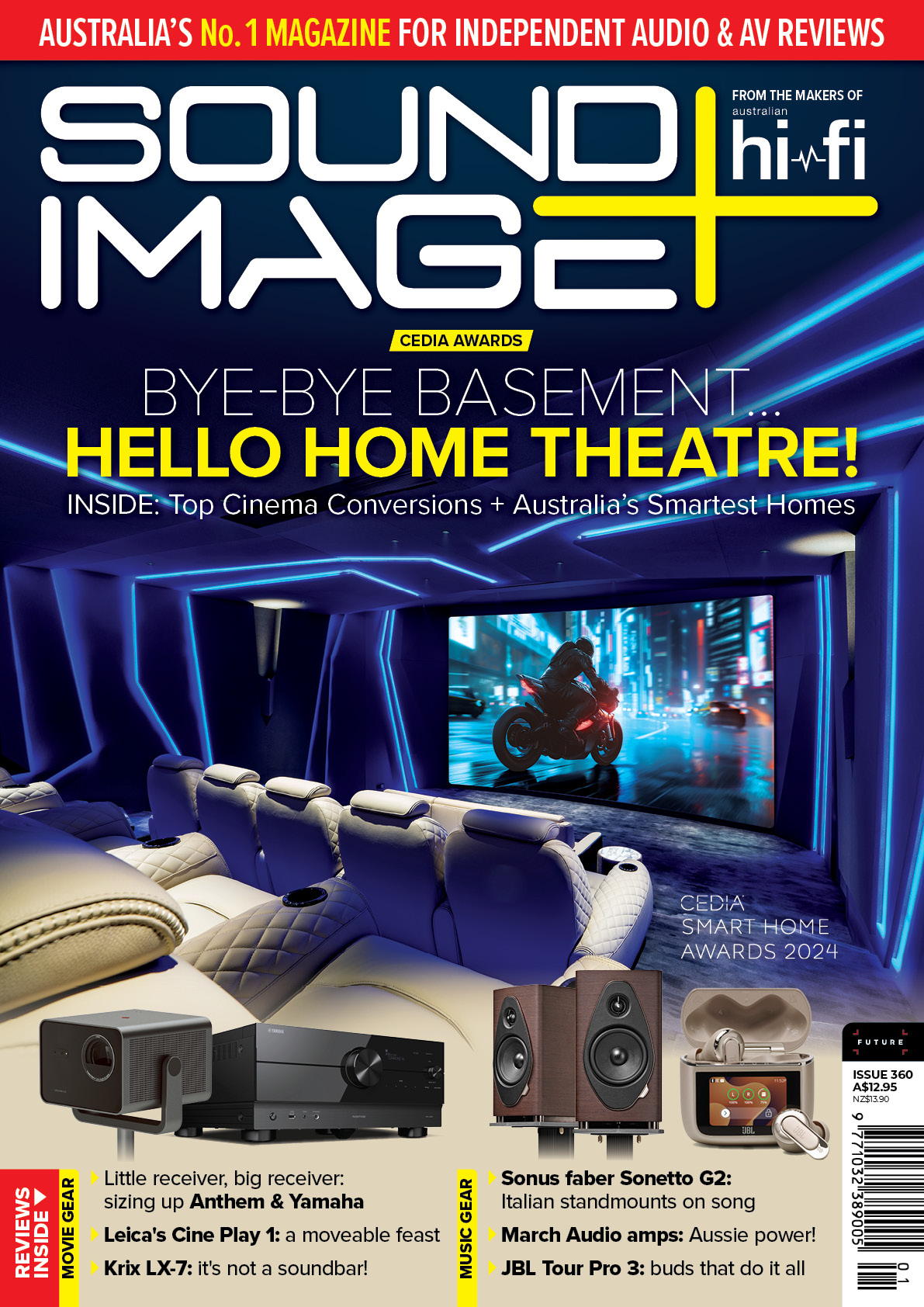Sound+Image Verdict
Another excellent projector from Taiwan's BenQ – more traditional in looks and a level above its recent quirkier designs, this is a true home cinema model which delivered excellent colours, blacks and DLP-level 4K resolution
Pros
- +
First class overall picture quality
- +
Superfast games mode
- +
Integrated Android TV dongle
Cons
- -
As always, a setting to force film-mode deinterlacing would be welcome
Why you can trust What Hi-Fi?
BenQ seems pretty excited about its new W4000i home theatre projector. It’s a premium model, although not stratospherically priced. Do we think its excitement is warranted? Let’s see.
Build & facilities
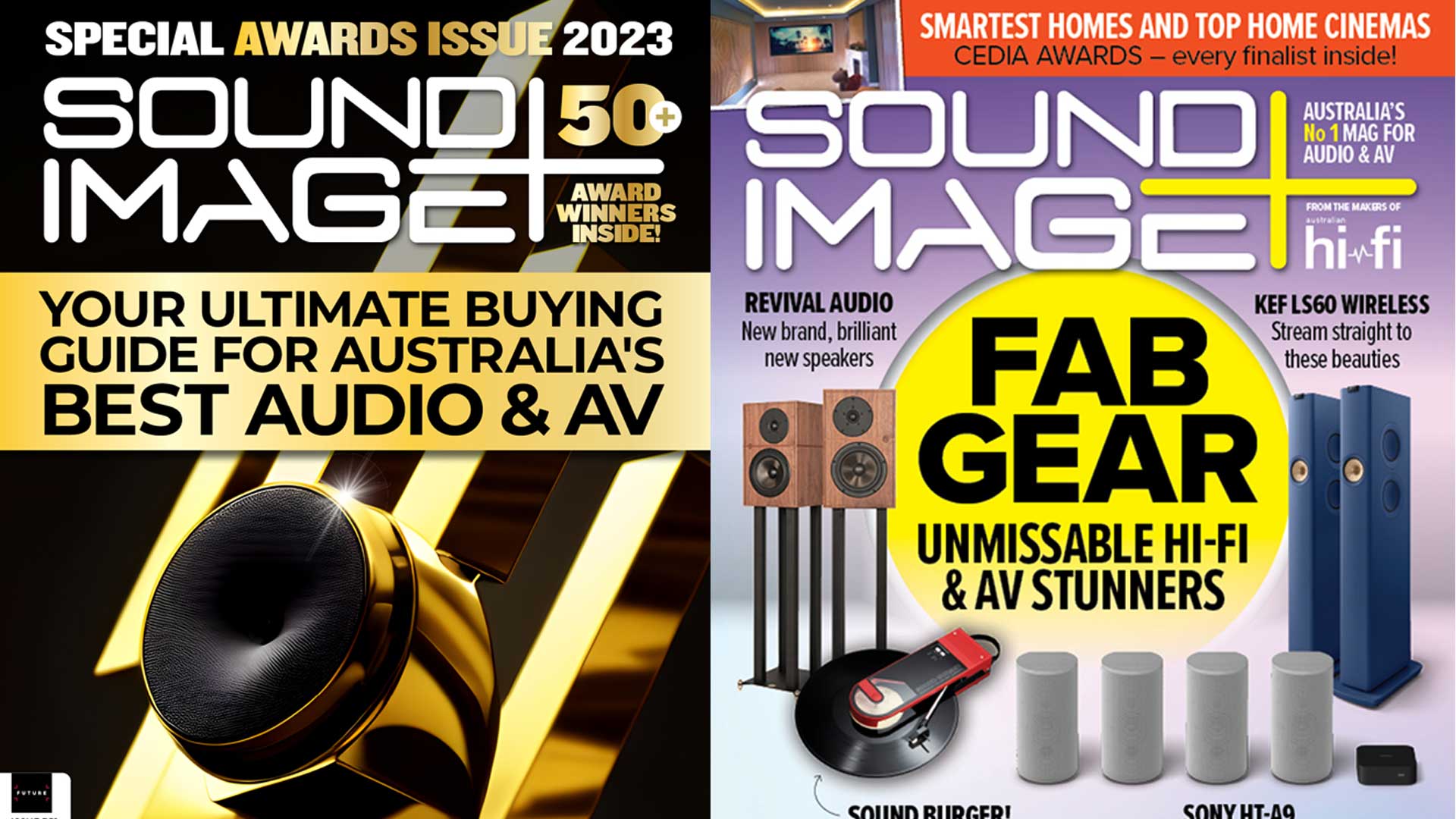
This review originally appeared in Sound+Image magazine, Australian sister publication to What Hi-Fi?. Click here for more information on Sound+Image, including digital editions and details on how you can subscribe.
Read What Hi-FI?'s global, star-rated BenQ W4000i review
At first glance, this compact, black-coloured projector doesn’t look particularly unusual. It could almost be a business model.
There’s no protruding lens: it’s well-protected within the unit’s body. But
looks can be deceiving. In fact, it measures significantly larger than BenQ’s business and lower-cost home entertainment projectors, and weighs about 50% more, suggesting a fine build quality.
And then there’s the feature set. The projector uses solid-state LED lamps, which are warrantied to 20,000 hours of use. That’s about two years and three months without switching it off. Or, more realistically, 18 years with three hours of use every single day.
The image is provided by a 1920 × 1080-pixel 0.65-inch Digital Micromirror Device with 4× pixel-shifting technology, designed to deliver a native Ultra-HD (consumer 4K) image. The BenQ rates the brightness at 3200 ANSI lumens, and the contrast ratio at up to 2 million to 1.
The unit supports modern high-end picture quality standards: HDR10, HLG and HDR10+ and both Rec.709 and DCI-P3 colour. Indeed, for both of those colour standards the projector offers 100% support, not some mere subset of the colour range. Every projector is individually calibrated for colour accuracy at the factory and provided with a calibration report.
There are two HDMI inputs, both supporting 4K and HDCP 2.2. One of them also supports the HDMI audio return channel (and eARC as well). Why would that be, given that ARC is only useful where the display device is an audio source? Well, the W4000i comes bundled with a BenQ QS02 Android TV dongle. Although “dongle” is perhaps misleading, because it doesn’t poke out precariously from one of the HDMI inputs at the back. Instead there’s a neat rectangular housing for the QS02 on the back of the projector, with its own power and HDMI connector built in. The thing is about as well integrated into the projector as anything can be, short of factory installation.
Two remote controls are provided: one for the Android TV device, and one for both the QS02 and the projector itself.
Other connections are a USB-A slot for media playback, another to supply power to anything else you might want to plug in, stereo analogue and optical digital audio outputs, and RS232C, Ethernet and a 12V trigger output for system integration.
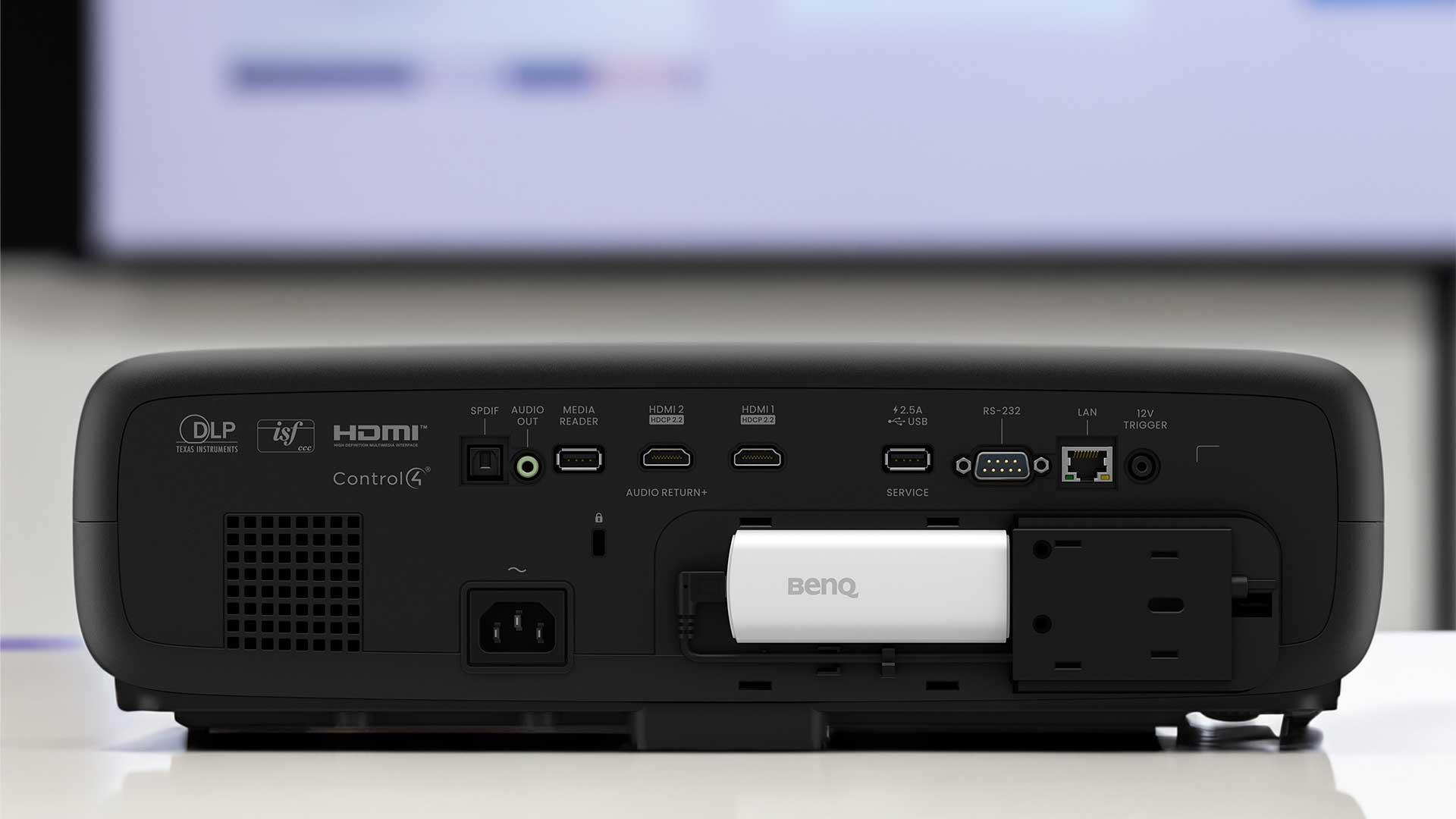
The projector is well-equipped in the optical department. All adjustments are manual, but smoothly implemented. There is both vertical lens shift (up to 60%) and horizontal (up to 15%). The zoom range is 1.3:1 zoom range. For a 100-inch screen a range of between 2.526 metres and 3.301 metres is required.
The projected image, when no lens shift is applied, is centred on the lens axis, rather than cast upwards or downwards. While the lens shift allows some adjustment, you’re still going to have the projector somewhere in line with the screen unless you want to resort to keystone adjustment. Of course, the projector supports that, but we always recommend against it because the digital image processing results in fewer pixels than those physically available being used, reducing resolution of content.
Interestingly – a first for us – the projector also displayed an on-screen warning before presenting the keystone adjustment screen during set-up, suggesting that the fast games mode will not work as quickly if keystone adjustment is applied. That digital processing takes time as well as compromising pixels.
Performance
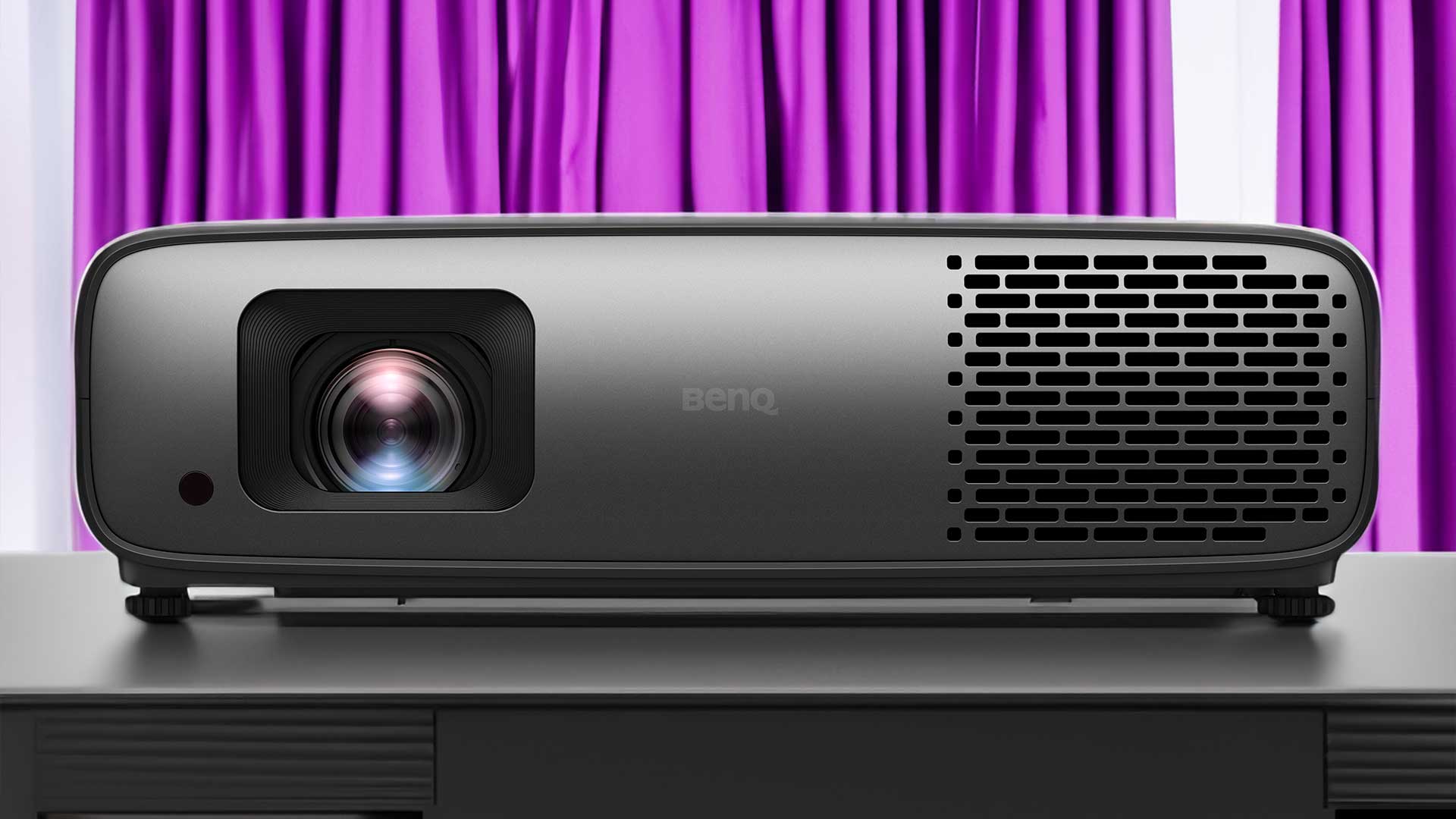
Projection technology: 16.5mm FHD Digital Micromirror Device with 4x pixel shifting technology
Resolution: 3840 x 2160 pixels
Aspect ratio: 16:9
Lamp: 4LED
Lamp life: 20,000 hours
Contrast ratio: 2,000,000:1 (Full On/Full Off with Dynamic Black)
Brightness: 3200 ANSI lumens
Inputs: 2 x HDMI (1 with eARC/CEC), 1 x USB-B (with media support), Android TV
Outputs: minijack stereo, optical digital audio
Other: RS-232C, USB-A (2.5 amp power), RJ45 Ethernet, 12V trigger
Dimensions (whd): 421 x 135 x 312mm
Weight: 6.6kg
We experienced a slight wobble setting up the projector for use, because it clearly wasn’t at factory-original settings. For one thing, the QS02 dongle had already been installed, and it seemed that the remotes had been paired. We tried resetting things to factory default – both the dongle and the projector itself – but afterwards we couldn’t get the usual Google Home set-up to work on our phone.
Not a real problem – we were just being lazy. We went into the QS02 menu, signed onto our Wi-Fi network, entered our Google credentials and we were in. After a bit, we fired up the Netflix app and Google offered to log us in automatically, which we accepted. We expect that a unit purchased at a retail store will take advantage of Google Home set-up on an Android phone, but even so our set-up added maybe five minutes to the process.
We watched a bit of this and that on Netflix, including a couple of episodes of the most recent season of Dark Mirror. This is shot sharp and with full benefit of modern technology, and it kind of startled us with how exceptionally good it looked.
The present writer has been reviewing display technology since the days when TVs were exclusively CRT (or the occasional rear projection TV) – including home theatre projectors. And I for one think this may be the best big picture I have ever seen.
Why?
No, the black levels aren’t OLED TV in their darkness, but they are dark enough to go beyond the threshold in which black on-screen items look to the human eye legitimately black. And even in dark scenes which are deprived of a contrast range which helps those blacks look black, the dark levels are convincing enough for unimpeded enjoyment.
Why else? Well the brightness is excellent. By default, the projector runs in ‘Eco’ mode, which means a lower lamp brightness than the maximum available (which BenQ calls ‘Normal’). For screens of 100 or fewer inches, that Eco is likely the appropriate output setting. The brightness is plenty and the fan noise virtually inaudible. If you have a 200-ish inch screen, then you’ll probably need a bit more oomph, but you’ll also likely be in a larger venue in which a bit of fan noise will be of relatively little import.
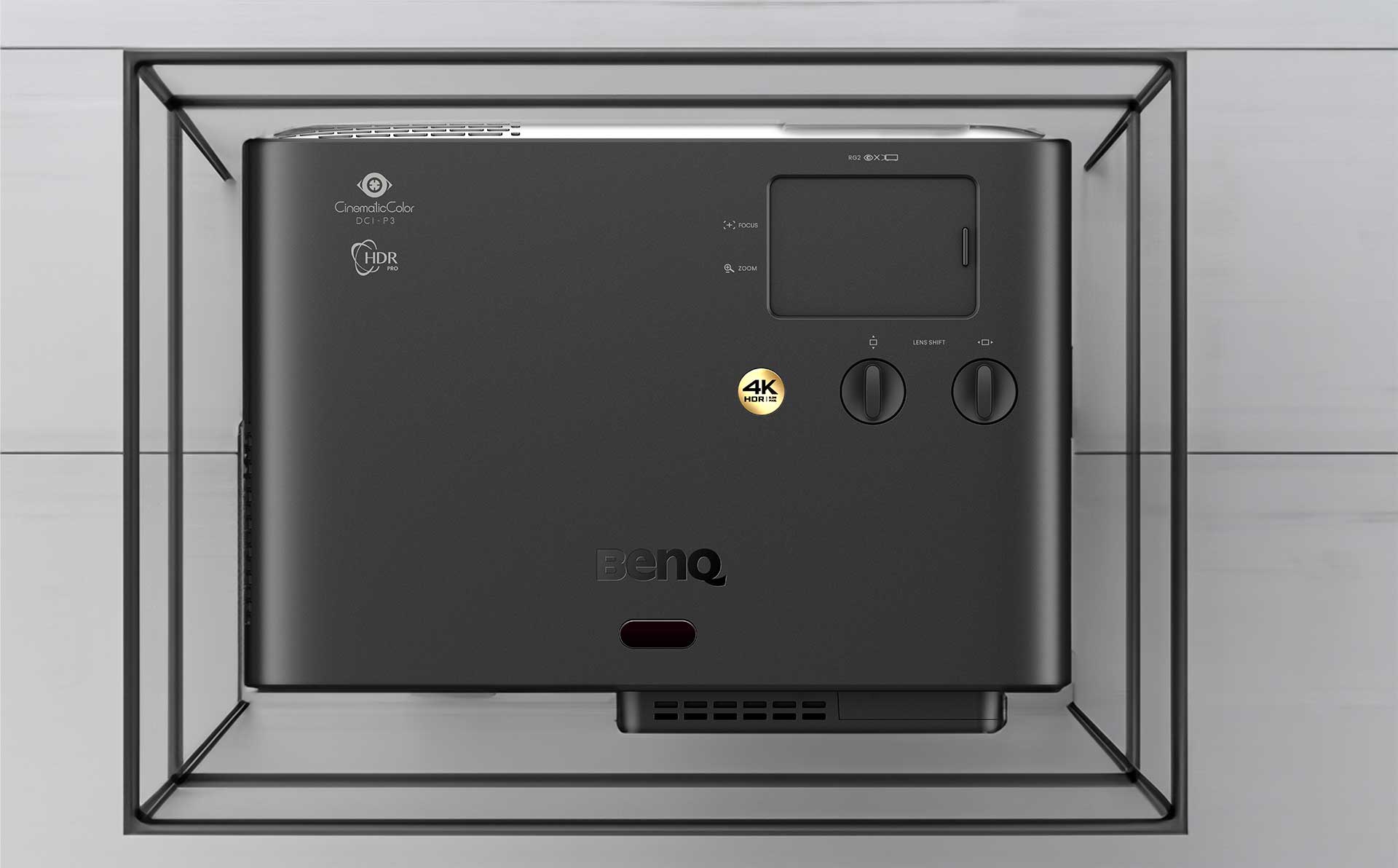
Just as important, though, perhaps even more so, is what happened between the dark and the light stuff. What happened there was realistic, natural gradients. In particular, skin tones were superbly graded across faces, with never a hint of flattened surfaces. Faces were perfectly rounded. And of course things like trees, the blue sky, colourful features were correctly intense.
And all that was at the default settings. The projector noticed when HDR10 signals were coming in and set itself correctly. The result: gorgeous.
Even better was UHD Blu-ray. There are a lot more bits of data in this format than anything streaming, even if the resolution is nominally the same. All the discs we span looked great, and especially great were things like Gemini Man, which is encoded at 2160p/60. It’s a pity that frame interpolation motion smoothing was ever invented, since it seems to have given many people a visceral dislike of natively high-frame-rate content. But this disc looked simply stunning with this projector. It had all the virtues listed above, and added the subjective sense of markedly higher picture sharpness, which is one of the side-effects of HFR. With less resistance to this format, we’d hopefully see more movies shot in this way, realising a great jump in picture quality. Oh well.
Now, since we’re talking about resolution, let’s be clear. Test patterns reveal that displaying full 3840 × 2160 pixels is sort of within the capabilities of this projector. But it’s more ‘hinted at’ than clearly etched out, unlike a direct-view display such as a 4K TV. In fact, we’ve found that earlier BenQ projectors using the 0.47-inch DMD, rather than the 0.65-inch DMD of this model, deliver a more precisely-defined UHD image. That’s perhaps due to less overlap between the shifted pixels in the smaller DMD.
But in the real world, with real UHD content, we can’t say we were able to detect any real loss of picture detail or sharpness. It just looked great.
Indeed, the projector did an excellent job with standard Blu-ray and even with standard PAL DVDs. That last was a bit of a surprise to us. But the picture processing and scaling managed to turn 576i/50 into 2160p with decent sharpness, while avoiding noticeable artefacts. Well, on our hardest torture tests, we did notice one brief instance of the picture analysis processor slipping the projector incorrectly into video-sourced deinterlacing mode (that is, it bobbed the two fields into a frame, rather than weaving them). On the scale of these things – amongst devices that don’t offer a manual film mode, anyway – that was just about as good as it gets. The same happened in one brief flash with our 1080i/50 test. Again, very close to as good as it gets.
Importantly, both 576i/50 and 1080i/50 had no cadence problems, unlike many earlier pixel-shifting DLP projectors. Clearly the content was not all being converted to a jerky 60p.
In the press material BenQ notes that while the W4000i includes frame interpolation motion smoothing, it leaves this switched off by default to enhance the purity of the picture. We agree with that. But it is available if you like that kind of thing (buried in the Picture menu under “Advance Color Settings”, then “CinemaMaster”, then “Motion Enhancer 4K” if you’re looking for it), with three levels and “Off”. The “High” level provided super-smooth motion, with some mild heat-haze artefacts, but none of the weird detail jumping that some systems produce.
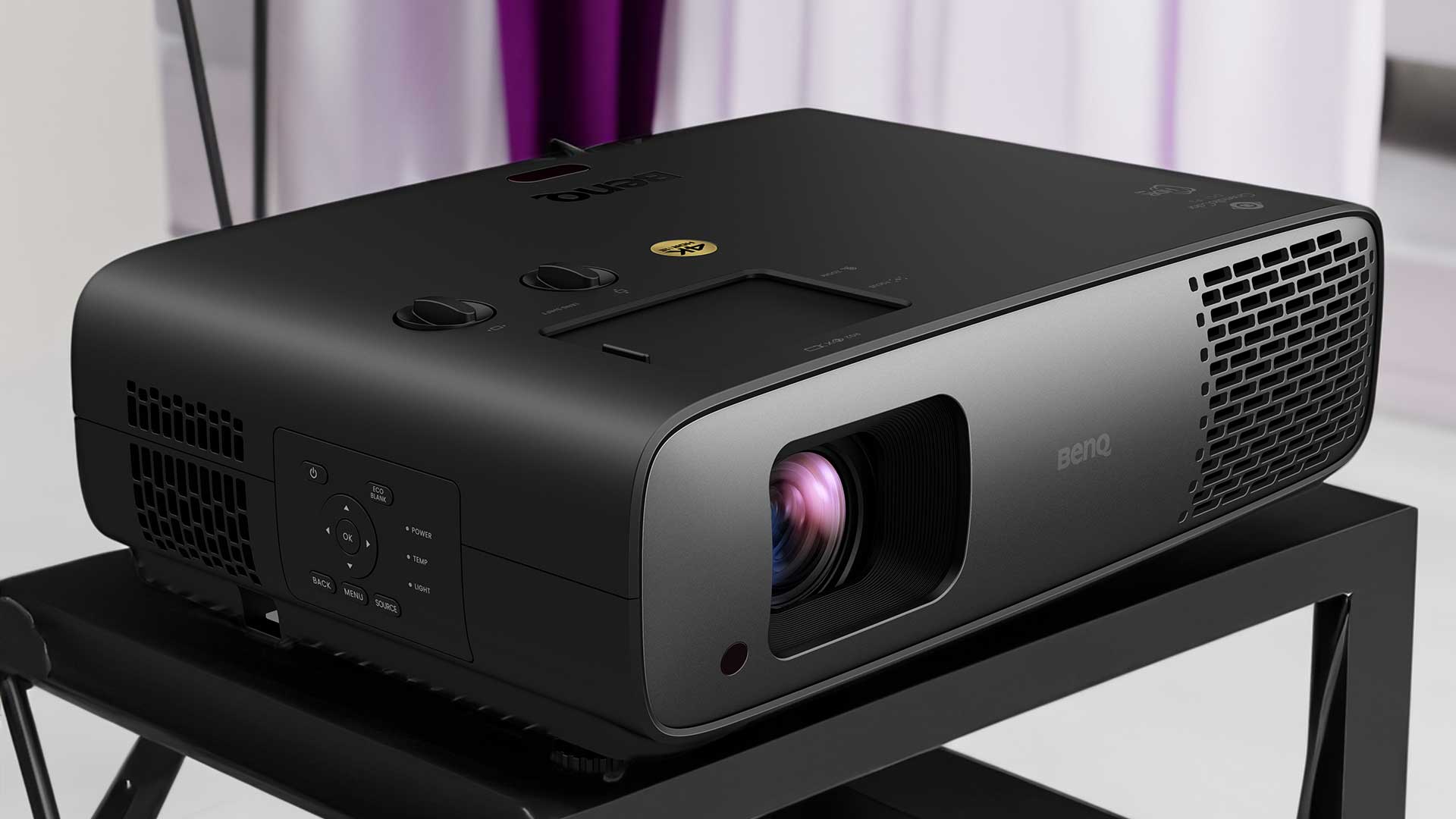
Gaming performance
Since BenQ has highlighted the projector’s ‘Fast Mode’, we gave Gran Turismo 7 a spin on the PlayStation 5. Initially it was disappointing. We found a bit of lag in the display, evidenced by us continually braking late and missing corners.
So we went exploring. With our electronic picture-lag checker (this is only capable of 1080p output), we found that in ‘Fast Mode’ the latency (picture delay) was around 112 milliseconds, and with it off the delay went up to 125 milliseconds. That didn’t seem right. An on-screen box had suggested switching of processing, such as noise reduction. We switched everything off that we could find and got the latency down to 109ms.
There was only one thing left on the list of suggestions: ensure that the aspect ratio is set to “Auto”. We had a look and found that we’d earlier set it to 16:9 to force some DVDs into the correct shape. When we checked the latency after making that change, it had reduced to an astonishingly low 18.2 milliseconds.
The delay was now well below any level at which it could make a difference. We ran the same track on Gran Turismo and effortlessly knocked more than ten seconds off our time... and that was after a glass of wine. Superfast game mode proven!
Verdict
So, do we think BenQ’s excitement about the W4000i is warranted? We do. We suppose that you might be able to produce a finer picture than it delivers... if you throw enough thousands of dollars at some other projector. But for us, that would definitely be a case of significantly diminishing returns. Because the BenQ W4000i is thoroughly satisfying.
Review: Stephen Dawson
Sound+Image is Australia's no.1 mag for audio & AV – sister magazine to Australian Hi-Fi and to the UK's What Hi-Fi?, and bestower of the annual Sound+Image Awards, which since 1989 have recognised the year's best hi-fi and home cinema products and installations. While Sound+Image lives here online as part of our group, our true nature is best revealed in the print magazines and digital issues, which curate unique collections of content each issue under the Editorship of Jez Ford, in a celebration of the joys that real hi-fi and high-quality AV can bring. Enjoy essential reviews of the most exciting new gear, features on Australia's best home cinemas, advice on how to find your sound, and our full Buying Guide based on all our current and past award-winners, all wrapped up with the latest news and editorial ponderings. Click here for more information about Sound+Image, including links to buy individual digital editions and details on how best to subscribe.
